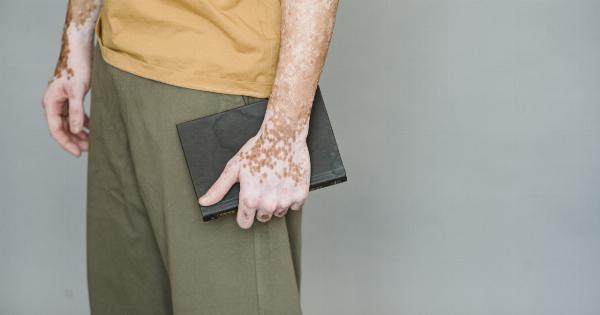Rashes are a common skin condition that affects both children and adults. They are characterized by skin redness, itching, and irritation that can be caused by different factors.
Understanding the various types of rashes, their causes, and treatments can help you manage them and avoid severe complications.
What Are Rashes?
Rashes are changes in the skin’s texture and color resulting from skin inflammation, infection, or allergic reactions. They can be flat or raised, bumpy or smooth, and can appear in various shapes and sizes.
Rashes can be localized on one part of the body or spread across a broader area.
Types of Rashes
There are different categories of rashes that you may encounter during your lifetime. Let’s look at the various types of rashes:.
1. Contact Dermatitis
Contact Dermatitis is a skin rash that develops when your skin comes in contact with an irritant or allergen. These irritants can be anything from chemicals, jewelry, soaps, fragrances, and many more.
This rash is characterized by redness, itchiness, and blistering. Treatment may include topical creams or removal of the irritant.
2. Eczema (Atopic Dermatitis)
Eczema is a condition that causes dry, scaly, and itchy patches on the skin. It is a chronic skin condition, meaning it can last for a long time. Eczema can be caused by environmental triggers such as sweating, weather changes, or allergies.
Treatment may include topical ointments, moisturizers, or oral medication.
3. Psoriasis
Psoriasis is an autoimmune condition that causes the rapid growth of skin cells, leading to thick patches of skin that are dry, cracked, and itchy. It is not contagious and can affect any part of the body.
Treatment may include topical ointments, phototherapy, and oral medication.
4. Rosacea
Rosacea is a skin condition that causes redness, flushing, and visible blood vessels on the face. It can also cause pus-filled bumps and eye problems. It is common among women and people with fair skin.
Treatment may include topical creams, oral medication, and laser therapy.
5. Heat Rash (Miliaria)
Heat rash, also known as miliaria, is a common rash that occurs in hot and humid conditions. It is characterized by small bumps that appear on the skin’s surface, and it is usually itchy and uncomfortable.
Treatment may include keeping the affected area cool and dry, wearing loose-fitting clothing, and using topical ointments.
6. Hives (Urticaria)
Hives are another type of skin rash that occurs when the skin comes in contact with an allergen or irritant. They are often characterized by red, itchy, and raised bumps on the skin’s surface.
Hives can resolve on their own or can be treated with antihistamine medication.
7. Ringworm (Tinea)
Ringworm is a skin infection that is caused by a fungus. It is characterized by a red, scaly patch on the skin’s surface. Tinea can be treated with antifungal medication and keeping the affected area clean and dry.
8. Scabies
Scabies is a contagious skin infection that is caused by a mite. It is characterized by intense itching and a rash that appears as bumps and blisters.
Scabies can be treated with topical ointments, and anyone who has been in contact with an infected person should be treated to avoid spread of the infection.
9. Shingles (Herpes Zoster)
Shingles is a skin rash that is caused by a reactivation of the herpes zoster virus, which also causes chickenpox. It is characterized by a painful, blistering rash that occurs in a specific location on the body.
Shingles can be treated with antiviral medication.
10. Impetigo
Impetigo is a bacterial skin infection that is most common in children. It is characterized by red sores that can break open and ooze fluid. Impetigo can be treated with topical or oral antibiotics.
Conclusion
Understanding the different types of rashes and their causes can help you determine the right treatment option. Proper diagnosis by a medical professional is essential for an accurate treatment plan.
Protecting your skin, staying clean, and avoiding irritants and allergens can help prevent the occurrence of rashes. If you develop a rash that does not go away, consult a dermatologist for proper treatment.




























